Soft and chewy ube sugar cookies. These easy to be make purple yam crinkle cookies are coated with purple sanding sugar for a sparkle effect!
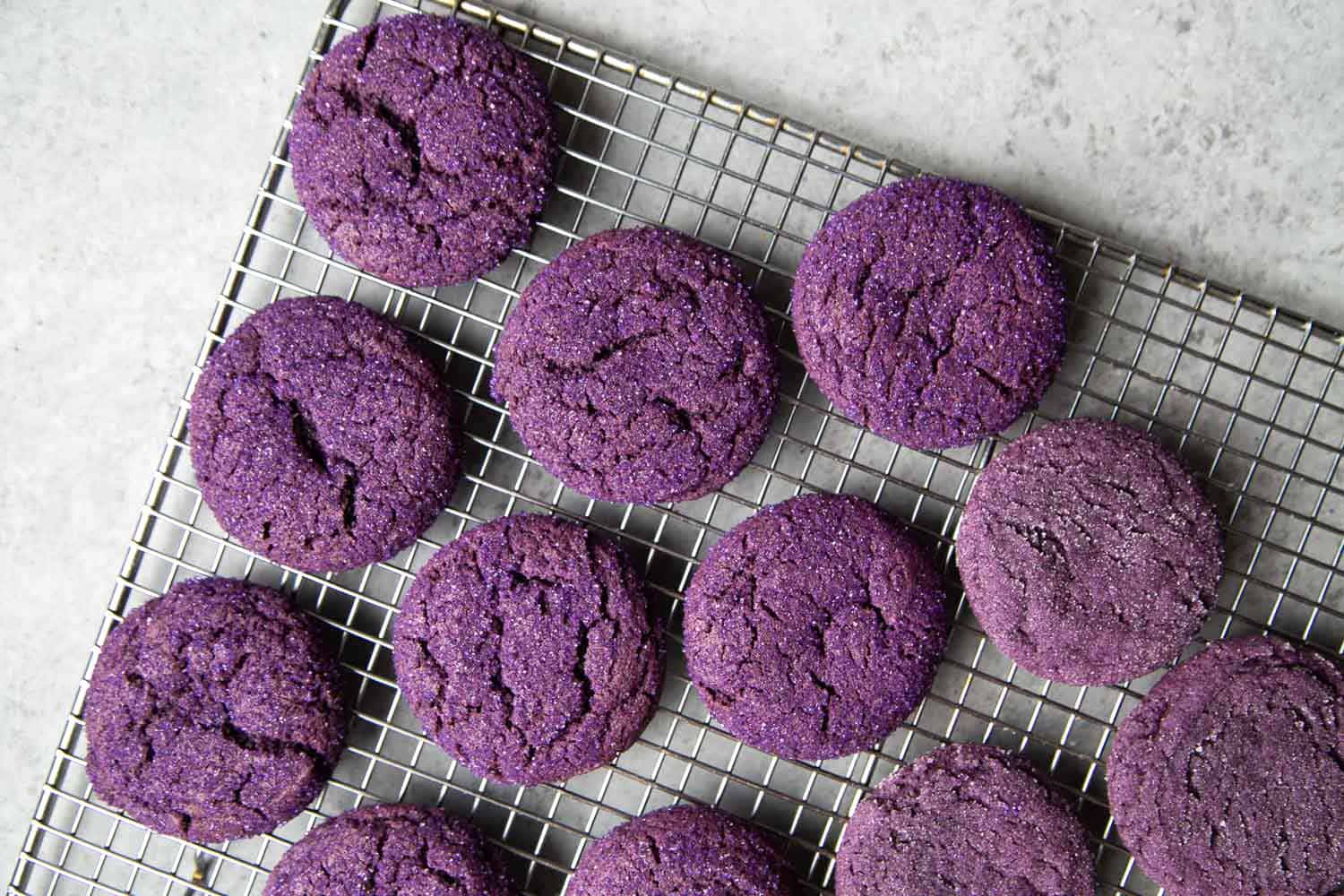
The increasing popularity of Filipino cuisine has brought about an ube explosion!
Bakeries all over Southern California are selling a variety of ube desserts. Ninong’s Dessert Lab has their famous ube pancakes and ube butter.Japanese favorite Uncle Tetsu offers ube cheesecake. And, classic Red Ribbon Bakeshop has an ube ensaymada.
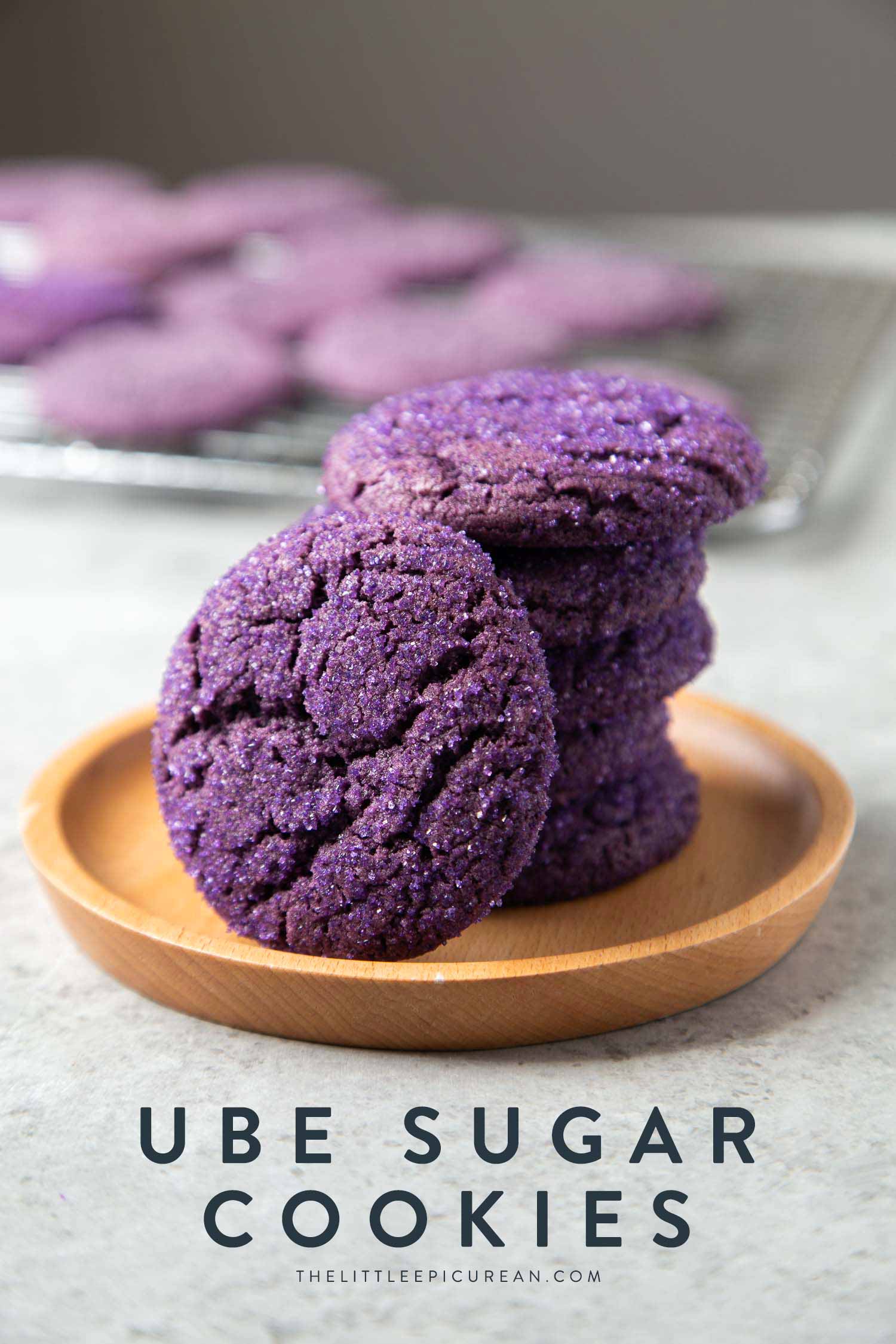
Ube Crinkle Cookies
This is the ultimate sugar cookie. When rolled in purple sanding sugar, these ube crinkle cookies sparkle and shine.
New to ube? These soft and chewy cookies are the perfect introduction to the sweet, earthy, and coconut-y flavors of ube.
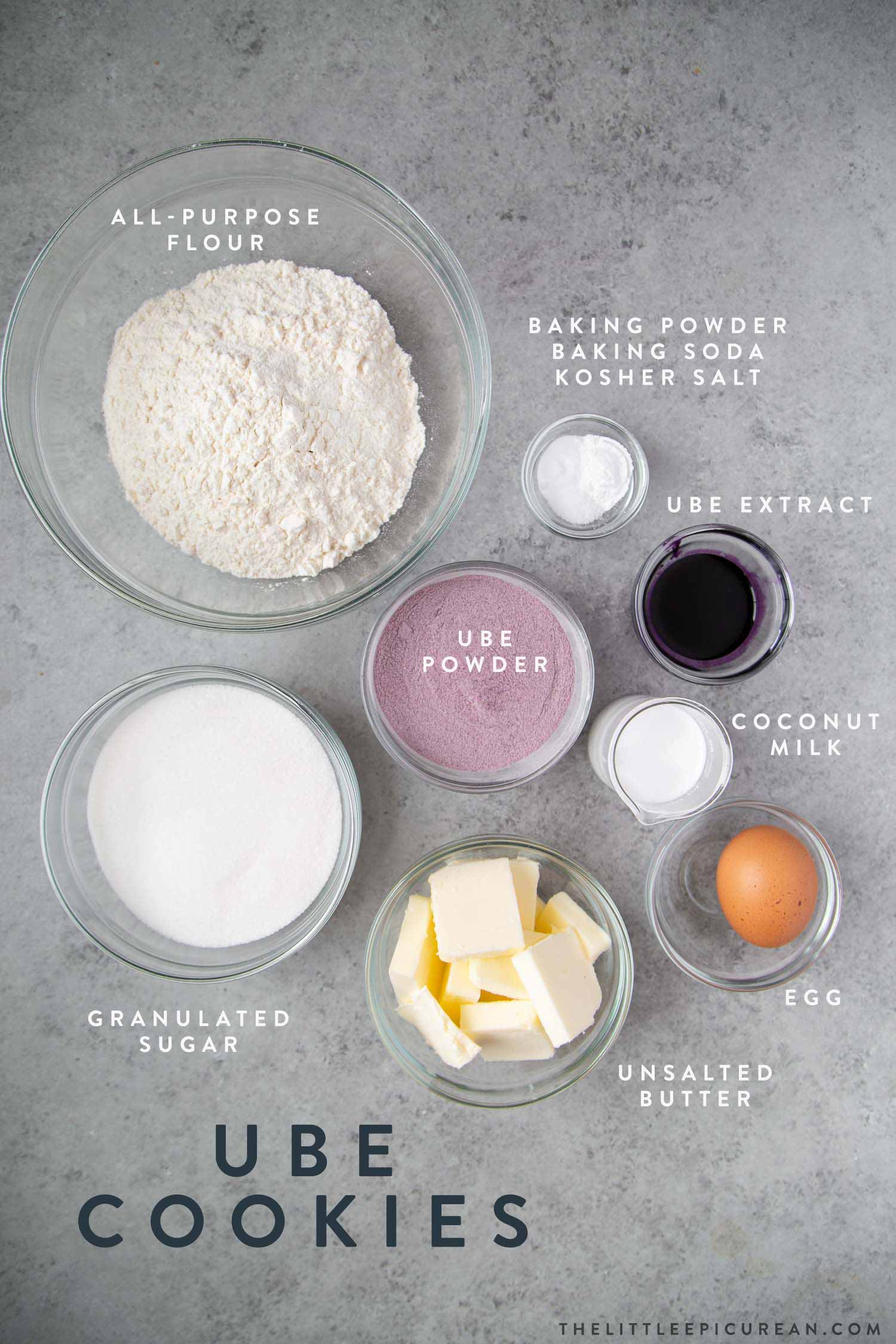
What is ube?
Ube is a purple yam native to Southeast Asia. Ube is pronounced “ooo-bae” in Talalog (Filipino). It’s a popular tuber widely used in Filipino desserts.
Though often mistaken for taro root or Okinawan sweet potato, they are not the same. They are relatives, but not the same tuber.
Note: Taro is called gabi in Tagalog.
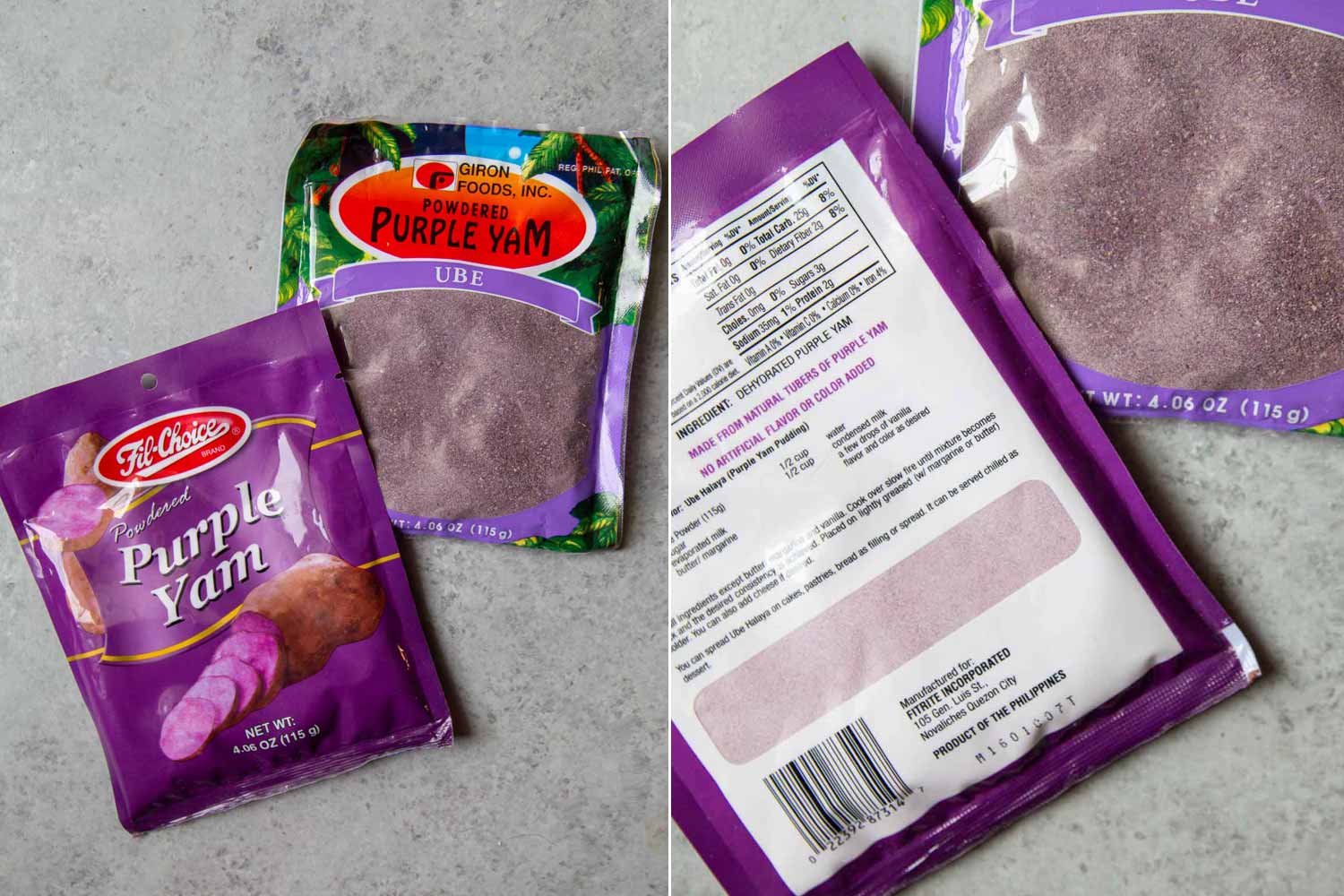
Why use Powdered Purple Yam?
Fresh ube is extremely difficult to find in the United States. From my experience, powdered purple yam is the easiest ube option to find and use.
There are several brand widely available in Los Angeles. I recommend the Fil-Choice brand photographed in the image above (left packet). Powdered purple yam is dehydrated purple yam.
Make sure to only use packages that is 100% purple purple yam. Some brands include powdered milk or sugar.
Powdered ube is sold at well stocked Asian supermarkets, placed alongside other baking ingredients like flour and extracts.
You’re guaranteed to find it at a Filipino market like Seafood City or Island Pacific Supermarket.
NOTE:And if all else fails, powdered ube is sold on Amazon. I purchased mine in store at Seafood City for about $4. I’ve seen prices range from $3.50-$5. Don’t spend more than $6 per four ounce bag. It’s not worth it.
Other Ube Options
Frozen ube is sold grated, shredded, mashed, or whole. This recipe does NOT work with frozen ube.
The amount of moisture in frozen ube, even if it is defrosted and squeezed of liquids, doesn’t work in these cookies.
Ube halaya is another widely available ube product. Ube halaya is also known as ube yam or halayang ube.
It is a cooked dish made from boiled mashed purple yam, milk (usually sweetened condensed milk and/or coconut milk), and sugar. Ube halaya is generally served as a dessert or used as filling or flavoring.
You can find many ube crinkle cookies that use ube halaya. This is not one of those recipes.
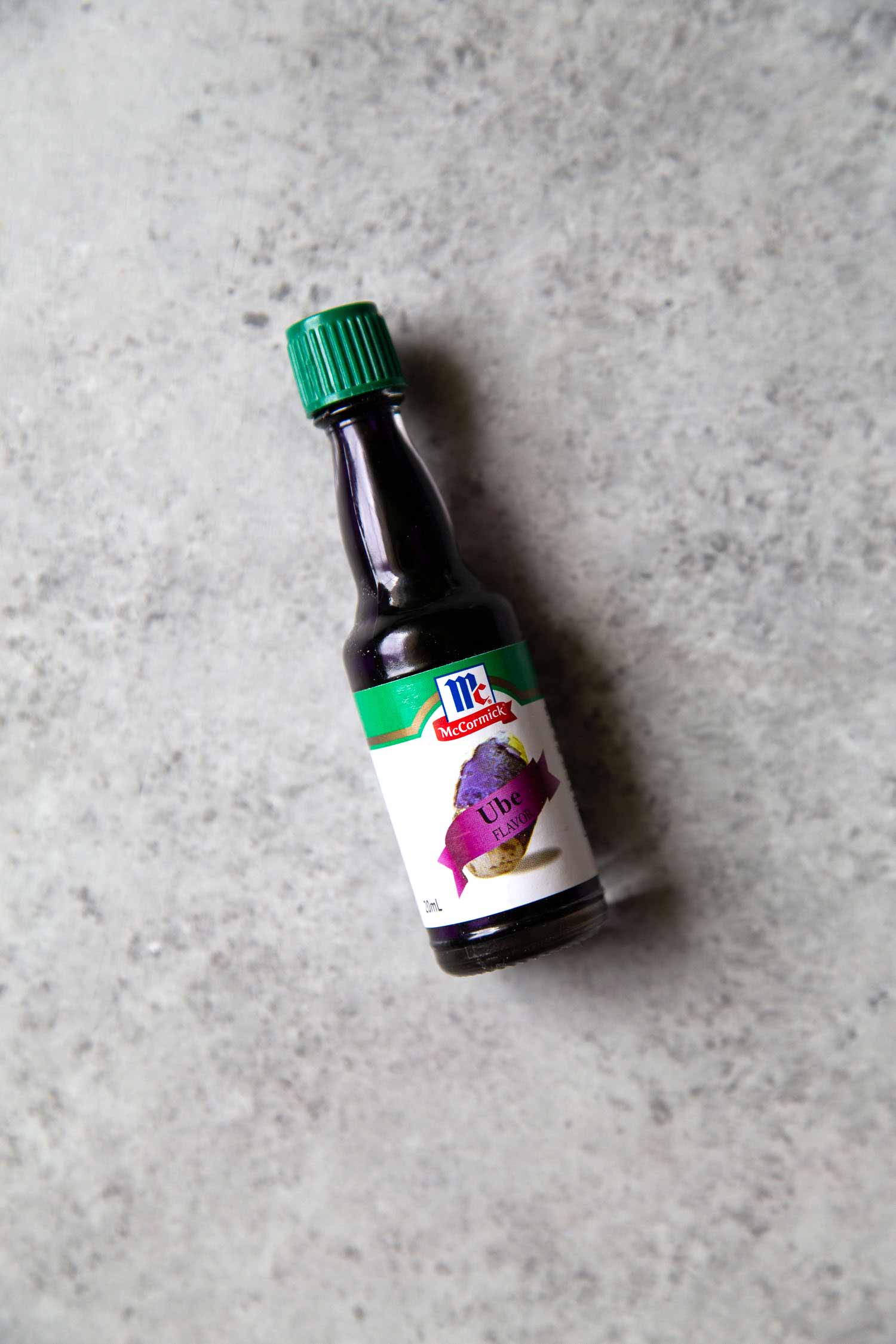
Ube Extract Flavoring
Ube extract is a powerful ingredient that helps to enhance the ube flavors of any dessert.
Use it for ice cream, ube milk bread, or ginataang bilo-bilo.
Ube extract is an important and necessary ingredient. It provides that iconic “ube” flavoring while also coloring the cookie dough. Without this ingredient, the resulting ube sugar cookies will not be as violet in color and the ube flavor will not be as pronounced.
NOTE: I stock up on ube extract whenever I visit the Philippines. It costs about $1 per bottle. Unfortunately, it’s not that cheap in the United States.
Ube extract is available for purchase through Amazon and it is widely available at Filipino and Asian supermarkets. Find it in the baking section along with other extracts.
![]()
Recipe Variation
Enjoy the harmonious balance of sweet, nutty ube with earthy matcha! These matcha ube sugar cookies are as delicious as they as beautiful.
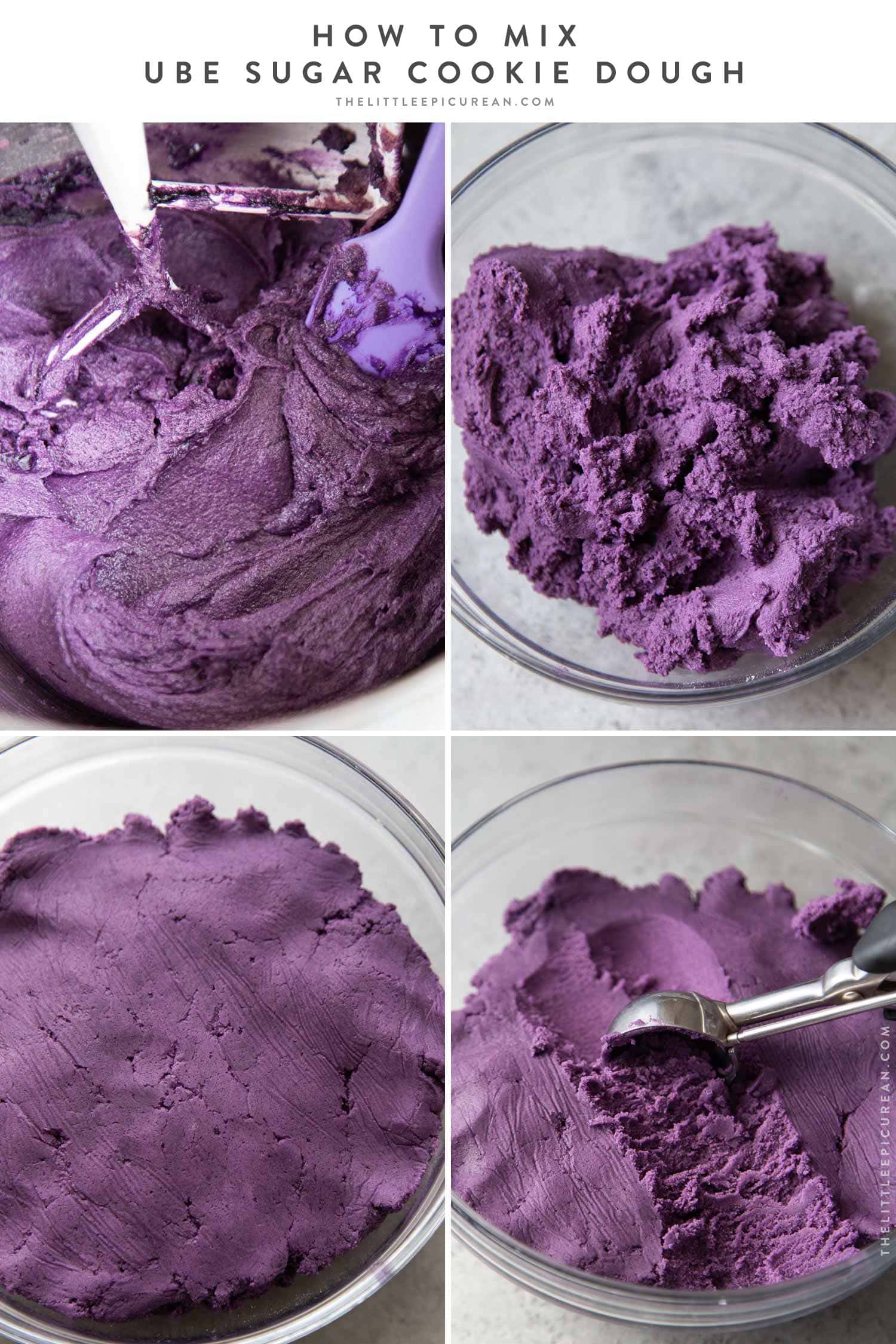
Mix Cookie Dough
Flavor is carried through fat. As such, it is best to incorporate the ube powder and ube extract into the butter and sugar mixture.
- Cream together softened butter, sugar, and ube powder until smooth. Add egg, ube extract, and coconut milk. Mix until well incorporated.
- Add dry ingredients (flour, baking powder, baking soda, and salt) to creamed butter mixture until dough forms.
- Cover cookie dough and chill in the fridge for at least one hour to let the flavors meld together. Overnight is best.
- Allow chilled cookie dough to warm up slightly at room temperature. Use a #40 scoop to portion out the dough.
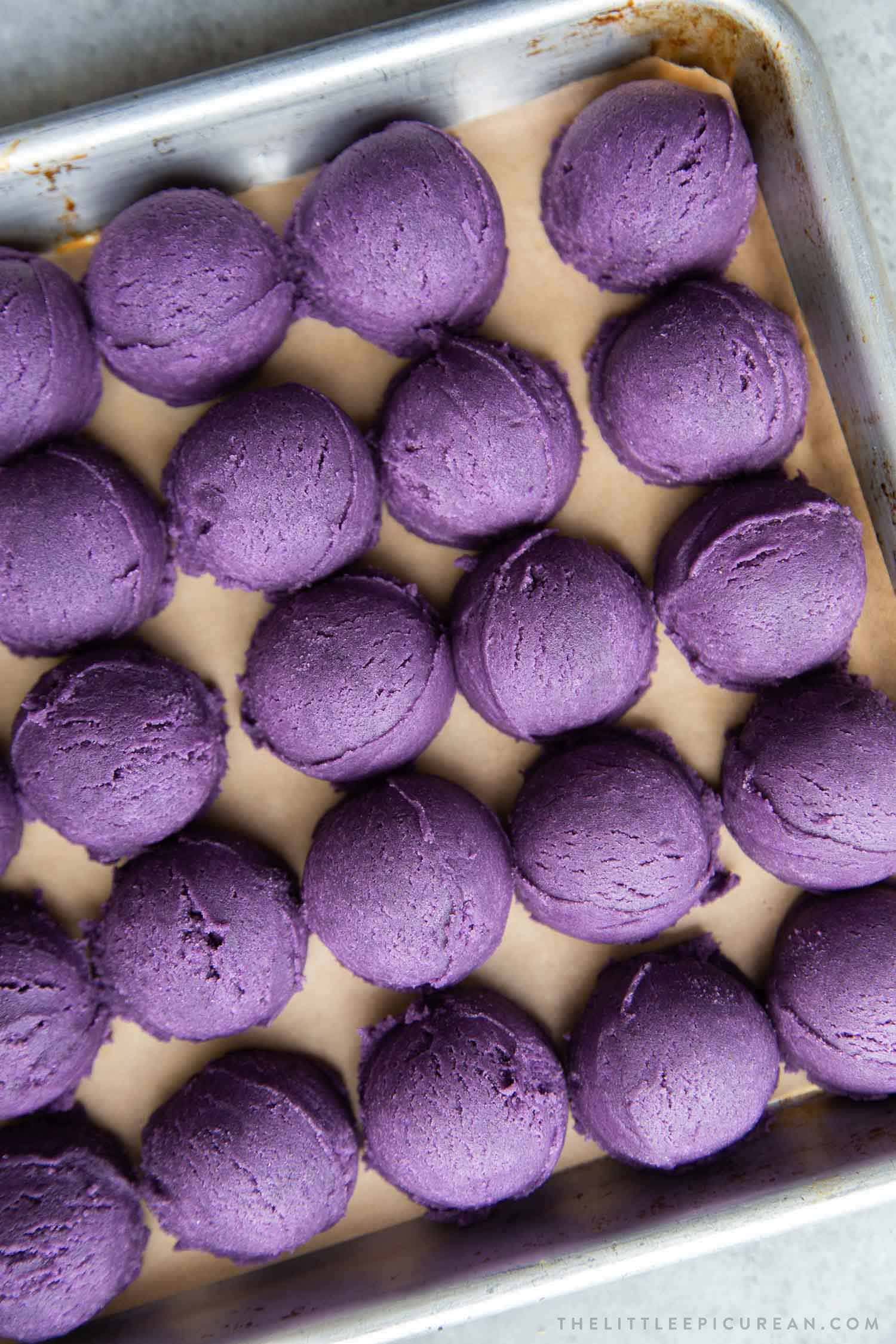
Is it necessary to chill the cookie dough?
YES. Chilling the cookie dough allows the flavors of the cookie to fully develop. (Just be sure to cover dough well. You don’t want any unwanted flavors from the fridge to seep into the sugar cookie dough!)
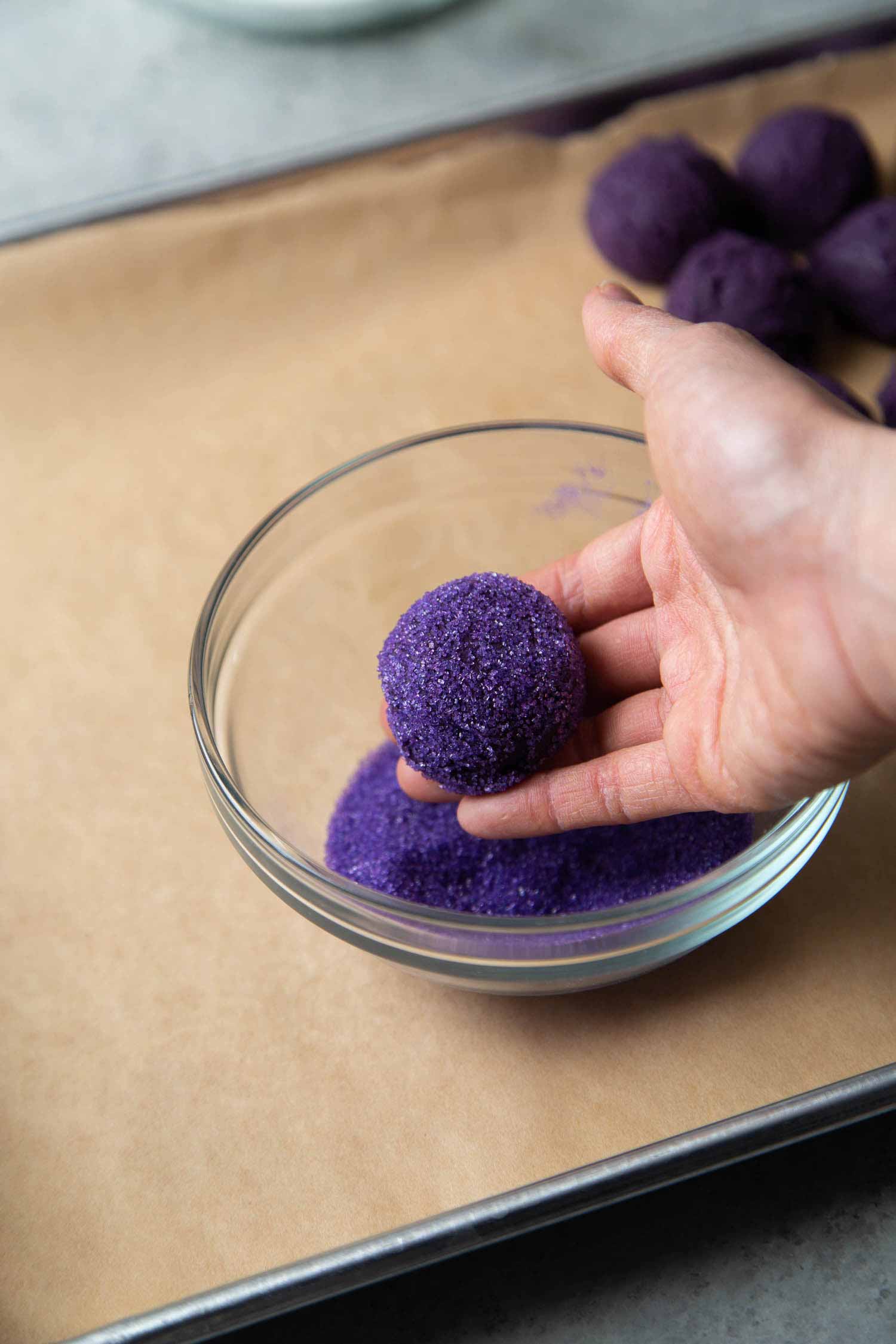
Roll Cookie Dough in Sugar
This is the fun part!
Roll the ube sugar cookie dough in purple sanding sugar, granulated sugar, or powdered sugar (confectioners’ sugar).
There is no right or wrong method. Each sugar option will produce a slightly different cookie.

What is sanding sugar?
Sanding sugar are large crystal sugar sold in a wide assortment of colors.
These large sugar crystal do not melt under heat the way granulated sugar does.
As a result, sanding sugar reminds crunchy even after baking. Sanding sugar is known for its shiny, sparkling effect when hit with light.
I used this lavender sanding sugar.
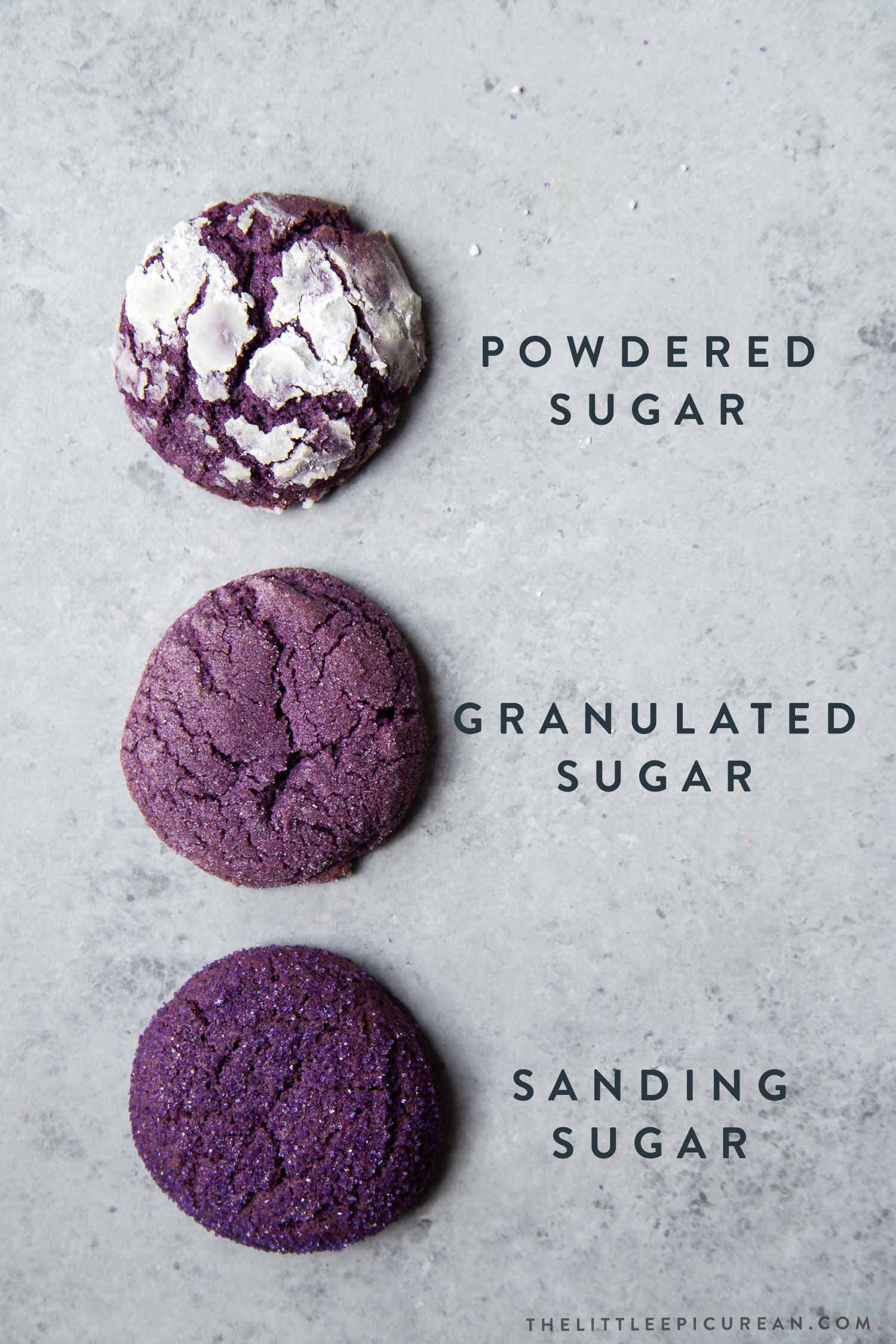
Powdered Sugar
- Produces an overall soft and chewy cookie. It makes that iconic ube crinkle cookie appearance.
Granulated Sugar
- The sugar creates a crispy shell crust exterior, while the insides remind soft and chewy.
Sanding Sugar
- Creates the most visually striking cookie that sparkles and shines. Crisp exterior, soft interior.
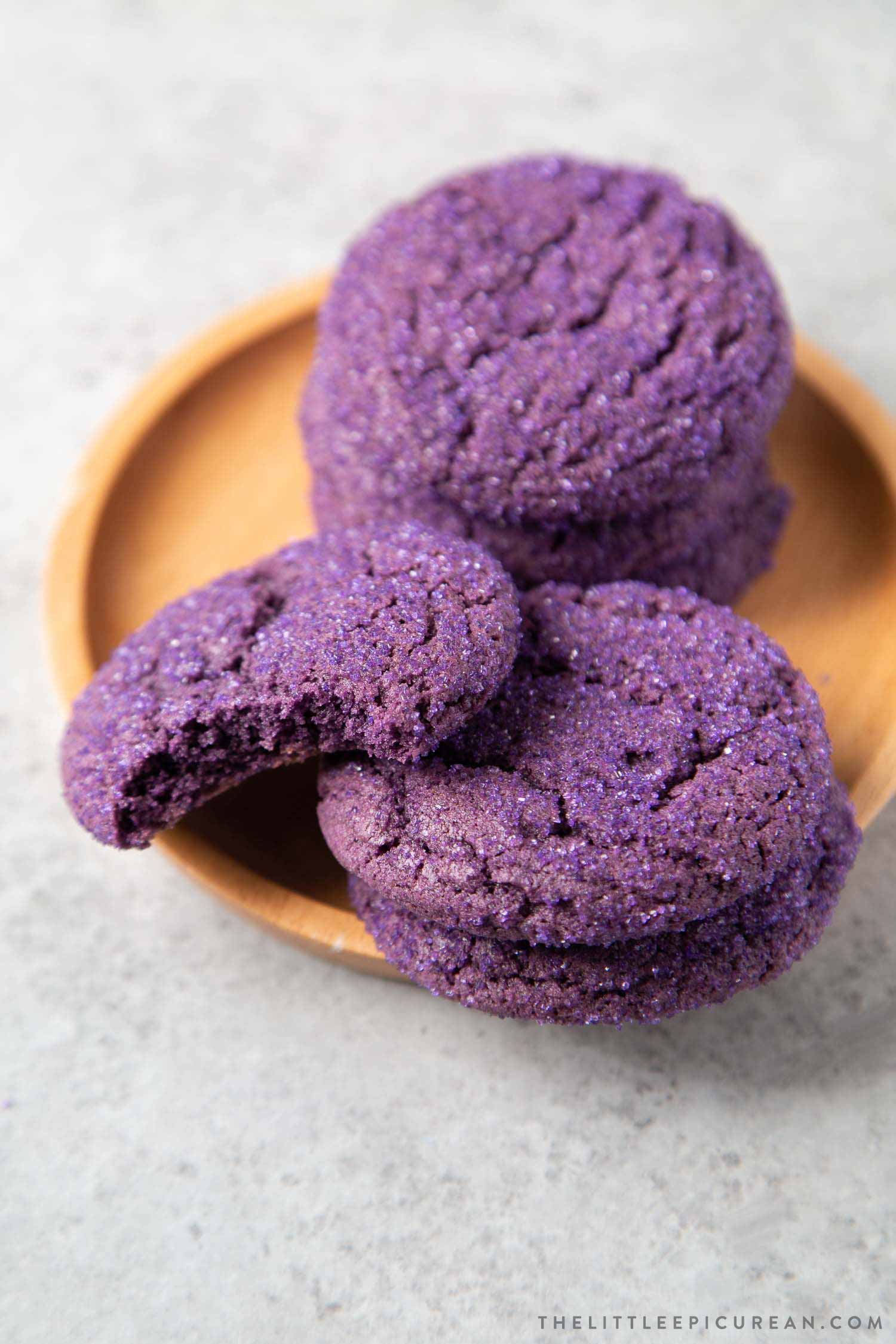
Storage and Leftovers
Cool cookies to room temperature on wire rack. Cool before storing. Cookies will keep in an airtight container for up to 5 days.
Ube sugar cookies will remain soft and chewy after baking because of the high starch content of ube powder.
Leftover cookies make for wonderful ice cream sandwiches! These these cookies with a scoop of no-churn ube ice cream.
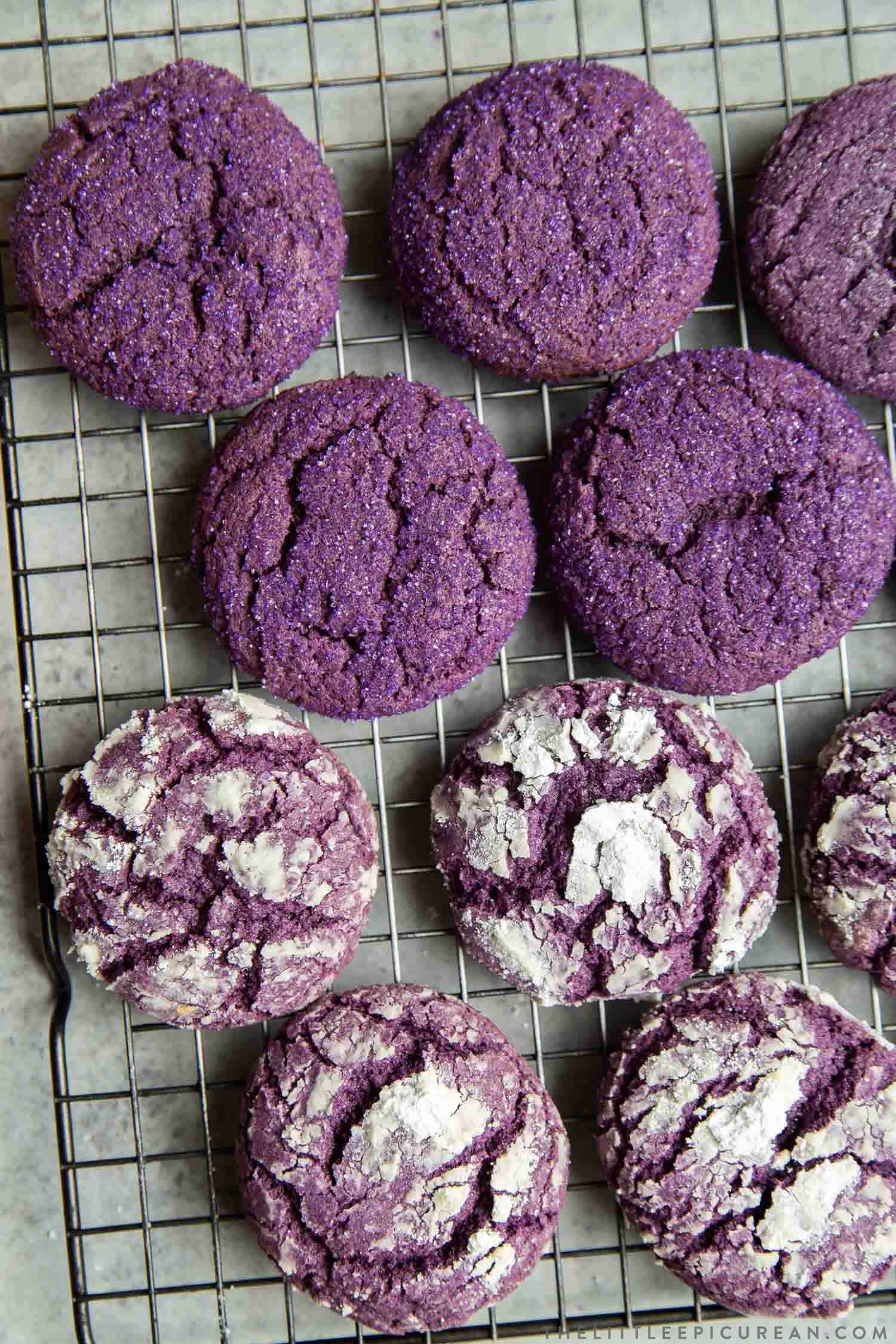
More Ube Recipes
Ube Sugar Cookies
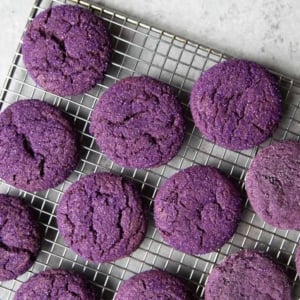
Equipment
- stand mixer or electric hand mixer
- #40 cookie scoop
Ingredients
Dough:
- 155 grams unsalted butter, (½ cup + 3 Tbsp) softened, room temp
- 250 grams granulated sugar, (1 ¼ cup)
- 115 grams powdered ube , (about ½ cup) or dehydrated ube powder
- 1 large egg, room temp
- 1 ¾ teaspoon ube extract, *
- ½ teaspoon pure vanilla extract
- 60 grams coconut milk, (¼ cup), canned, well-shaken*
- 260 grams all-purpose flour, (2 cups)
- 1 teaspoon baking powder
- ½ teaspoon baking soda
- ¼ teaspoon kosher salt
Rolling:
- granulated sugar, purple sanding sugar, or confectioners' sugar, as needed*
Instructions
Dough:
- In the bowl of a stand mixer fitted with a paddle attachment, cream together softened butter, sugar, and powdered ube until smooth, about 3 minutes.
- Add egg, ube extract, vanilla extract, and coconut milk. Mix on low speed until incorporated. Scrape down sides of bowl as needed to ensure thorough mixing.
- In a medium bowl, whisk together flour, baking powder, baking soda, and salt. Add dry mixture to mixing bowl. Mix on low speed until dough forms. Scrape down sides of bowl as needed. Be careful not to overmix.
- Cover cookie dough. Chill in the refrigerator for at least one hour. Overnight is best.
- Preheat oven to 350°F. Line baking sheets with parchment paper or silicone baking mat. Set aside.
- Remove cookie dough from the fridge. If cookie dough has been chilled overnight, allow dough to sit at room temperature for 30-45 minutes before scooping.* Use a 1 ½ Tablespoon scoop (#40 scoop) to portion out the dough.
- Roll cookie dough in your choice of sugar: granulated sugar, purple sanding sugar, or confectioners' sugar.
- Place cookie balls 2-inches apart on prepared baking sheet. Bake for 13-15 minutes, until the edges of the cookies have set. Rotate baking sheet midway through baking. Rest in baking sheet for 3-5 minutes, then transfer cookies to wire rack to cool.
Notes
- Granulated Sugar creates a crispy shell crust exterior that protects the soft and chewy interior.
- Purple Sanding Sugar produces the most visually striking cookie that sparkles and shines. It has a crisp exterior and soft interior.
- Confectioners’ Sugar makes for an overall soft and chewy cookie. It will result in that iconic ube crinkle cookie appearance.
- Ube extract is a vital ingredient that enhances the ube flavor while coloring the dough violet.
- Use canned full-fat coconut milk. Shake well before use. Do not use low-fat coconut milk.
Nutrition
Nutrition information is automatically calculated, so should only be used as an approximation.
 Like this recipe? Rate & comment below!
Like this recipe? Rate & comment below!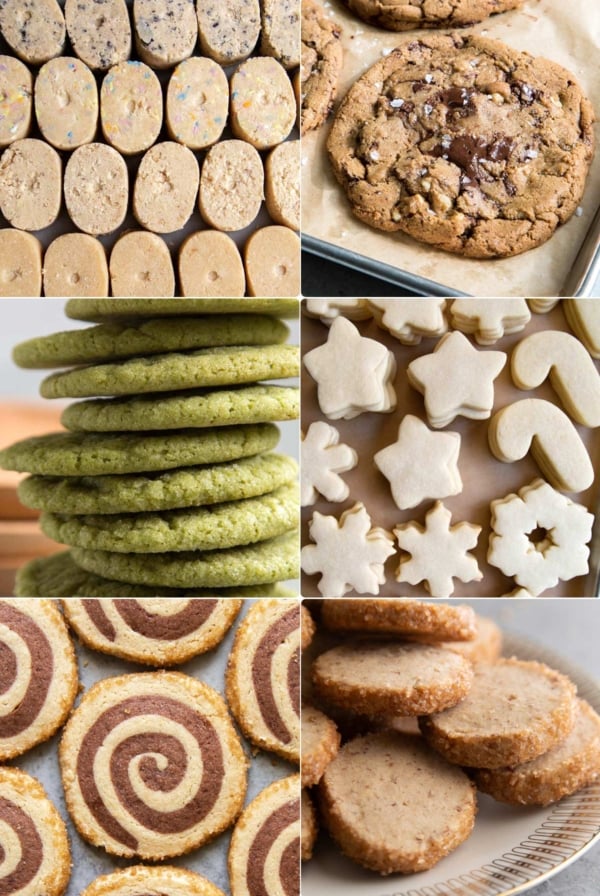

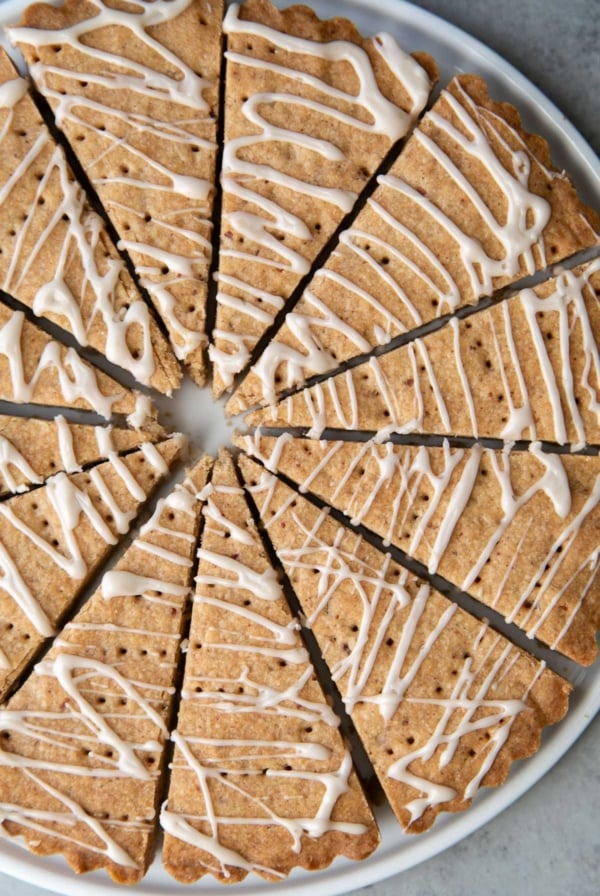
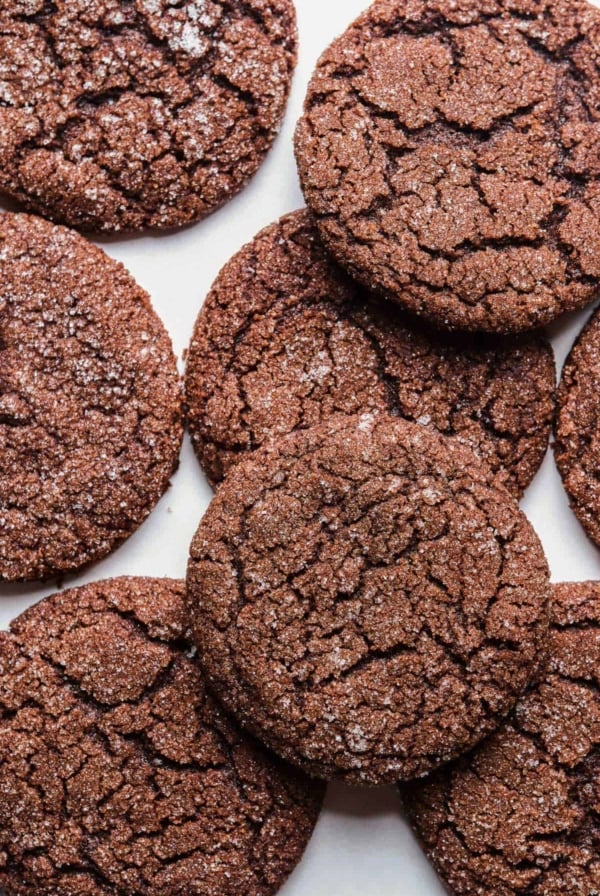





Sounds tasty. I have another Ube crinkle recipe, but haven’t used Ube powder before. So this is a good excuse to try it. I should be ok to scoop them chill right? Probably easier than chilling then letting it come up to temp to scoop, at least in my head
About how many regular-sized cookies do you think I can make with each batch?